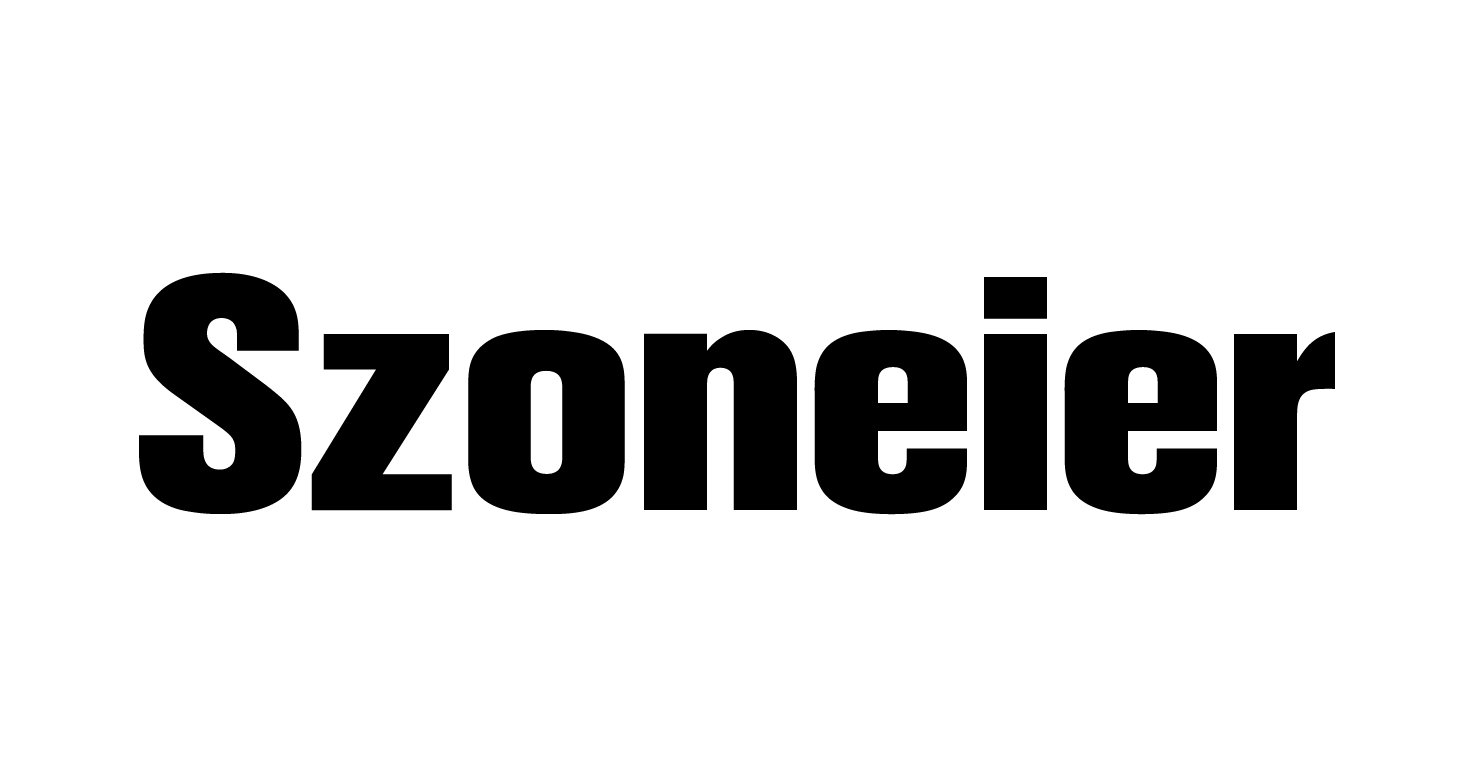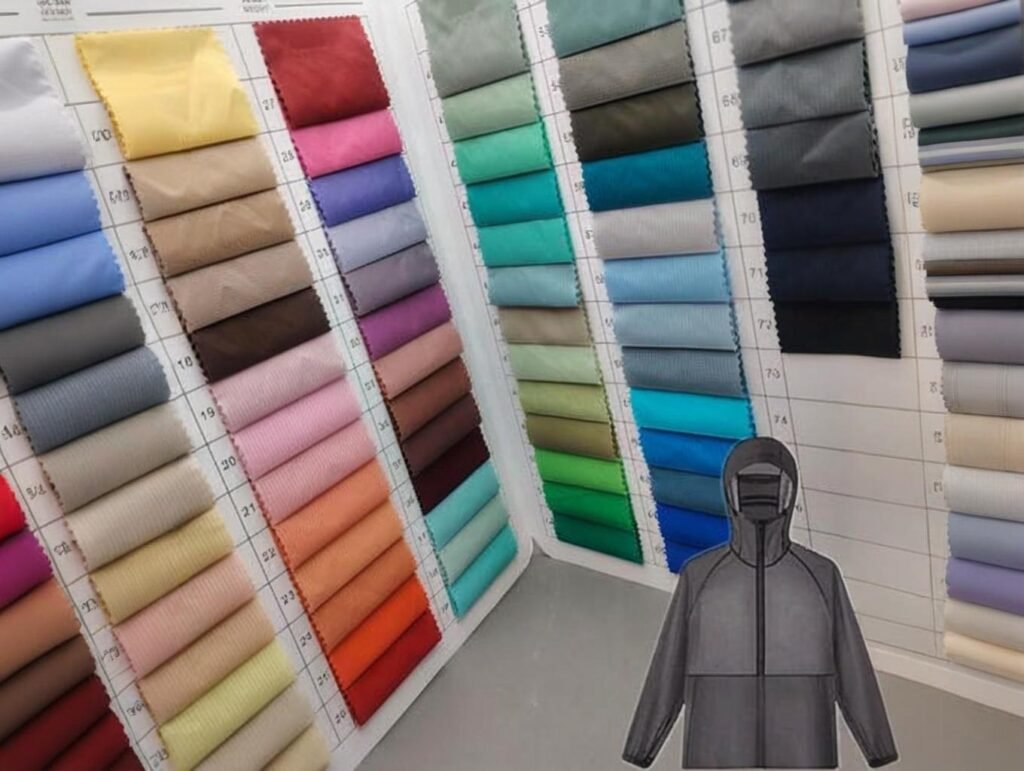
In the fast-evolving textile industry, nylon fabric remains a cornerstone material prized for its durability, versatility, and wide-ranging applications—from activewear and outdoor gear to industrial products and fashion. As global demand continues to rise in 2025, identifying the best nylon fabric manufacturers is crucial for companies seeking reliable supply, innovative solutions, and sustainable practices. Whether you’re sourcing high-performance fabrics or custom blends, the right manufacturer can make a significant difference in quality, cost-efficiency, and brand reputation. The best nylon fabric manufacturers in 2025 excel by combining advanced manufacturing technologies, stringent quality controls, sustainability certifications, and customer-focused customization. Leading players span across countries like China, India, Turkey, and South Korea, reflecting a mix of scale, innovation, and market responsiveness that suits various buyer needs.
But how do you navigate this complex market to find a partner who fits your specific requirements? Let’s dive deep into what defines the top nylon fabric suppliers today and explore industry insights, emerging trends, and practical tips to help you make the smartest sourcing decision.
- SzoneierFabrics (China) — Known for customization, quick sampling, and eco-friendly fabrics.
- Toray Industries (Japan) — Global leader in advanced nylon textiles and high-tech fibers.
- Hyosung Corporation (South Korea) — Pioneer in high-performance nylon fabrics and recycled nylon.
- Teijin Limited (Japan) — Innovator in sustainable nylon and high-tenacity fabrics.
- Invista (Cordura brand) (USA) — World-renowned for durable nylon fabrics used in outdoor and tactical gear.
- Far Eastern New Century Corporation (Taiwan) — Major nylon producer with strong R\&D focus.
- Huvis Corporation (South Korea) — Specialist in nylon yarns and technical fabrics.
- Shandong Ruyi Technology Group (China) — Large-scale textile group with diversified nylon production.
- Reliance Industries Limited (India) — Major player in synthetic fibers including nylon, with sustainable initiatives.
- Kuraray Co., Ltd. (Japan) — Advanced fabric technology and innovative nylon fiber solutions.
- Zhejiang Hengyi Group (China) — Growing presence in nylon textile manufacturing with focus on sustainability.
- Jiangsu Guotai International Group (China) — Strong exporter and manufacturer of nylon fabrics.
- Far Eastern Textile Ltd. (Taiwan) — Focus on innovation and functional nylon fabrics.
- Lenzing AG (Austria) — Known for sustainable fibers; expanding into engineered nylon blends.
- Ningbo Dairui Textiles (China) — Specialized in high-quality nylon fabrics for apparel and technical use.
What Are the Key Criteria to Identify the Best Nylon Fabric Manufacturers in 2025?
The nylon fabric industry in 2025 is evolving faster than ever, driven by innovation, environmental pressure, and heightened customer expectations across industries—from fashion to defense. As a buyer, designer, or brand developer, identifying the right manufacturer is no longer just about cost or capacity. It’s about who can support innovation, scale quickly, and meet sustainability targets while maintaining exceptional fabric quality.
The best nylon fabric manufacturers in 2025 are defined by their advanced production technology, verified certifications, broad fabric offerings, scalable supply chains, and sustainability leadership. Buyers should prioritize partners with customization capabilities, fast sampling, and strong technical support to meet modern performance and branding needs.
Key Criteria at a Glance:
| Evaluation Category | Why It Matters |
|---|---|
| Manufacturing Technology | Enables stronger, more functional fabrics with better consistency |
| Certifications | Verifies fabric safety, quality control, and environmental compliance |
| Product Range | Indicates production flexibility and capability across markets |
| Supply Chain Strength | Reduces delays, supports rapid restocking, and adapts to global logistics changes |
| Sustainability Initiatives | Aligns with brand goals and consumer expectations for eco-responsibility |
| Customer Support | Facilitates better design collaboration and faster issue resolution |
Multi-Dimensional Assessment
A. Technology Adoption Is the New Benchmark
Nylon manufacturers leveraging high-speed air-jet looms, automated warping, and robotic dyeing stations produce consistent, defect-free fabrics at scale. In 2025, this also includes:
- High-tenacity yarn technology (e.g., for outdoor, tactical, or workwear applications)
- Digital textile printing for detailed patterns on nylon blends
- Ultrasonic bonding and laser-cutting for seamless production
- Smart coatings like anti-UV, waterproof-breathable membranes, or FR (flame retardant)
💡 Case Example: A South Korean manufacturer adopted an AI-powered quality control system that reduced nylon fabric defects by 40% and shortened delivery cycles by 25%, helping them secure long-term contracts from EU-based sportswear brands.
B. Certifications Build Trust Across Borders
In a market dominated by compliance regulations, certifications act as a universal language of trust:
| Certification | Purpose | Who Requires It |
|---|---|---|
| OEKO-TEX® Standard 100 | Tests for harmful substances in fabrics | Global apparel brands |
| GRS / Recycled Nylon | Ensures recycled content is traceable and verified | Eco-conscious brands |
| ISO 9001 | Quality management and production consistency | Institutional and industrial clients |
| REACH Compliance | EU regulation for chemical safety in textiles | European buyers and distributors |
🛠 Tip: Always ask for updated audit reports—not just scanned certificates—to verify certification validity.
C. Breadth of Product Range Reflects Depth of Capability
Top-tier nylon fabric mills typically offer:
- Standard Woven Nylon (e.g., 210D, 420D, 600D)
- Ripstop Nylon (lightweight, tear-resistant for outdoor gear)
- Coated Nylon (PU, PVC, TPU, silicone)
- Blended Nylon Fabrics (nylon-cotton, nylon-polyester)
- Industrial Nylon (for luggage, upholstery, military-grade)
📊 Critical Viewpoint: A limited catalog often indicates a niche supplier, which may lack scalability or customization. Evaluate based on portfolio diversity and ability to prototype hybrid constructions.
D. Supply Chain Strength: Beyond Delivery Times
Post-pandemic, the smartest nylon manufacturers invested in:
- Local raw material partnerships (to reduce dependency on imports)
- Warehouse hubs near ports (to speed up container turnover)
- Integrated order-tracking systems (for real-time transparency)
- Multi-modal shipping flexibility (ocean, air, train, bonded warehouse)
📈 Data Insight: According to a 2025 Fabric Logistics Report, manufacturers with localized raw material sourcing reduced average delivery delays by 18% compared to those dependent on imported yarns.
E. Sustainability Is No Longer Optional—It’s Commercially Advantageous
With ESG goals shaping procurement decisions, leading nylon manufacturers are adopting:
- Recycled nylon yarns (Econyl®, GRS-certified)
- Closed-loop dyeing systems to minimize wastewater
- Zero-waste packaging initiatives
- Carbon offset reporting for shipments
🌱 Buyer Behavior Insight: In 2025, over 46% of international apparel brands require GRS-certified or OEKO-TEX-compliant fabric inputs to qualify vendors during sourcing events.
F. Customer Support = Design + Problem Solving Partner
When prototyping or scaling, technical support and pre-sale guidance can be dealbreakers. Leading suppliers offer:
- Free sample yardage or lab dips
- Pantone-matched dye services
- Private label tagging & packaging
- Weekly production updates and WhatsApp responsiveness
📌 Real-World Story: A niche bag brand in the UK switched from a larger mill to a smaller Chinese manufacturer, SzoneierFabrics, due to their ability to quickly turnaround color-corrected swatches and offer design file mockups within 48 hours—leading to an on-time product launch and 3x increase in retailer orders.
Which Countries Lead the Global Nylon Fabric Manufacturing Industry?
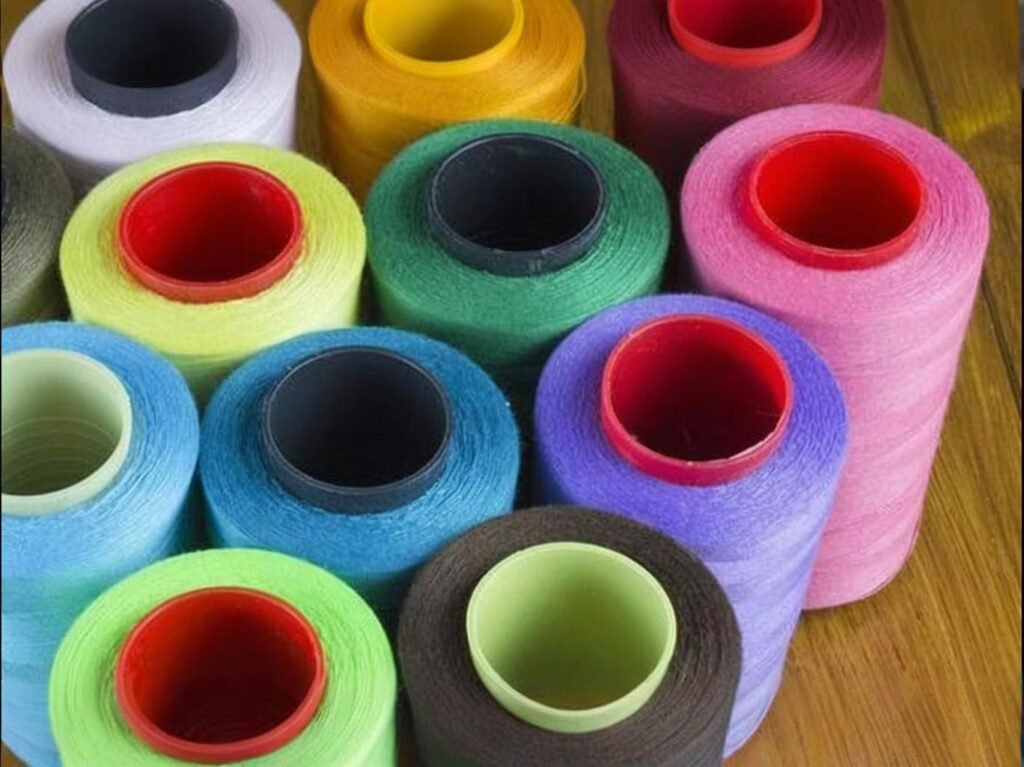
The global nylon fabric supply chain in 2025 is shaped by a mix of legacy manufacturing hubs and emerging innovation centers. While some countries dominate with massive production volumes and low costs, others lead with specialized technologies, eco-certifications, and supply chain responsiveness. As brands become more selective about where and how their materials are sourced, understanding each country’s strengths is essential for making informed sourcing decisions. The top countries leading nylon fabric manufacturing in 2025 include China, India, Turkey, South Korea, Japan, and Pakistan. These nations dominate due to their production capacity, technological advancements, cost efficiency, and proximity to key markets. Each offers distinct advantages depending on your product needs and sourcing priorities.
Expanded Country Profiles with Strategic Advantages
China: Global Leader in Volume, Variety & Speed
China remains the unrivaled heavyweight in nylon fabric manufacturing. With extensive infrastructure, a complete upstream and downstream textile supply chain, and export experience, Chinese mills can fulfill orders from small startups to global fashion giants.
- Specializations: 210D–1680D coated nylon, ripstop, camouflage nylon, jacquard nylon, printed nylon
- Customization Strength: Fast prototyping (3–7 days), wide color and weave variety, custom coatings (PU, TPU, PVC)
- Export Support: CN-based suppliers often offer FOB, CIF, DDP terms with global freight partnerships
📍 Top Regions: Guangdong (Dongguan, Guangzhou), Zhejiang (Shaoxing, Haining)
🧵 Case Insight: A German outdoor brand reduced production cost by 27% after switching to a Shenzhen-based mill capable of printing small-batch custom ripstop nylon with waterproof coating and Pantone-matching within 5 days.
India: Rising Power with Sustainability Appeal
India is catching up rapidly in global textile exports, combining its rich heritage of yarn spinning and dyeing with modern weaving and finishing technologies. The country’s growing eco-consciousness is especially appealing to Western brands.
- Specializations: Nylon-cotton blends, organic-certified fabrics, handwoven nylon textiles, digital print nylon
- Sustainability Edge: GOTS-certified facilities, waterless dyeing technologies, bio-based coating options
📍 Top Regions: Gujarat (Ahmedabad), Tamil Nadu (Erode, Coimbatore)
🌱 Buyer Viewpoint: In 2025, nearly 34% of UK-based fabric buyers prefer sourcing from India due to its rising transparency in labor standards and renewable energy use in textile mills.
Turkey: Fast Fashion Supplier for the EU
Turkey plays a strategic role as Europe’s nearshoring textile partner. The country’s manufacturers are known for high compliance standards, boutique-quality production, and short lead times—ideal for fashion brands and European distributors.
- Specializations: Stretch nylon for athleisure, breathable laminates, dyed nylon taffeta
- Certifications: Most mills hold OEKO-TEX, ISO 14001, and GRS, simplifying EU compliance
📍 Top Regions: Istanbul, Bursa, Denizli
🚚 Logistics Insight: With road and rail links to the EU and short shipping times (under 10 days to many EU countries), Turkey is a preferred sourcing hub for brands prioritizing agility.
South Korea & Japan: Innovation & High-Tech Nylon
These two countries may not lead in volume but are pioneers in quality and innovation. They dominate the niche of technical nylon fabrics, especially for sports, defense, and wearable technology.
- Specializations: Nylon-spandex blends, nanotechnology coatings, flame-retardant nylon, conductive textiles
- Innovation: Fabric R\&D centers focus on smart textiles and energy-efficient production
📍 Key Hubs:
- South Korea: Seoul, Daegu, Busan
- Japan: Osaka, Fukui, Nagoya
📊 Industry Fact: In 2025, South Korea exports over 55% of its technical nylon fabrics to North America and Europe for use in protective gear, outdoor equipment, and high-end activewear.
Pakistan: Competitive, Resilient, and Evolving
Pakistan continues to be a go-to destination for buyers looking for value-for-money nylon fabric, particularly in blended or utility categories. While infrastructure varies, select exporters meet global quality and compliance standards.
- Specializations: Nylon-polyester blends, dyed woven nylon, military-grade nylon textiles
- Growth Trajectory: Many mills are upgrading to offer GRS-certified recycled nylon
📍 Top Regions: Karachi, Lahore, Faisalabad
💬 Real-World Feedback: A Middle Eastern uniform supplier reported a 20% cost saving and better fulfillment rates after switching to a Karachi-based supplier for nylon oxford used in government contracts.
Market Dynamics at a Glance
| Country | Production Strengths | Drawbacks | Best For |
|---|---|---|---|
| China | Massive scale, speed, diverse offerings | Rising labor costs, trade tensions | Startups, private labels, OEM brands |
| India | Sustainability, skilled textile blending | Infrastructure challenges in some regions | Eco-friendly buyers, boutique brands |
| Turkey | EU proximity, fast delivery, quality compliance | Higher cost than Asia | Fashion, European supply chains |
| South Korea/Japan | Innovation, technical fabric leadership | High MOQs, premium pricing | Performance gear, technical applications |
| Pakistan | Cost-effective, improving sustainability standards | Variability in factory capabilities | Budget-focused buyers, Middle East, Africa |
How Do Top Nylon Fabric Manufacturers Ensure Quality and Consistency?
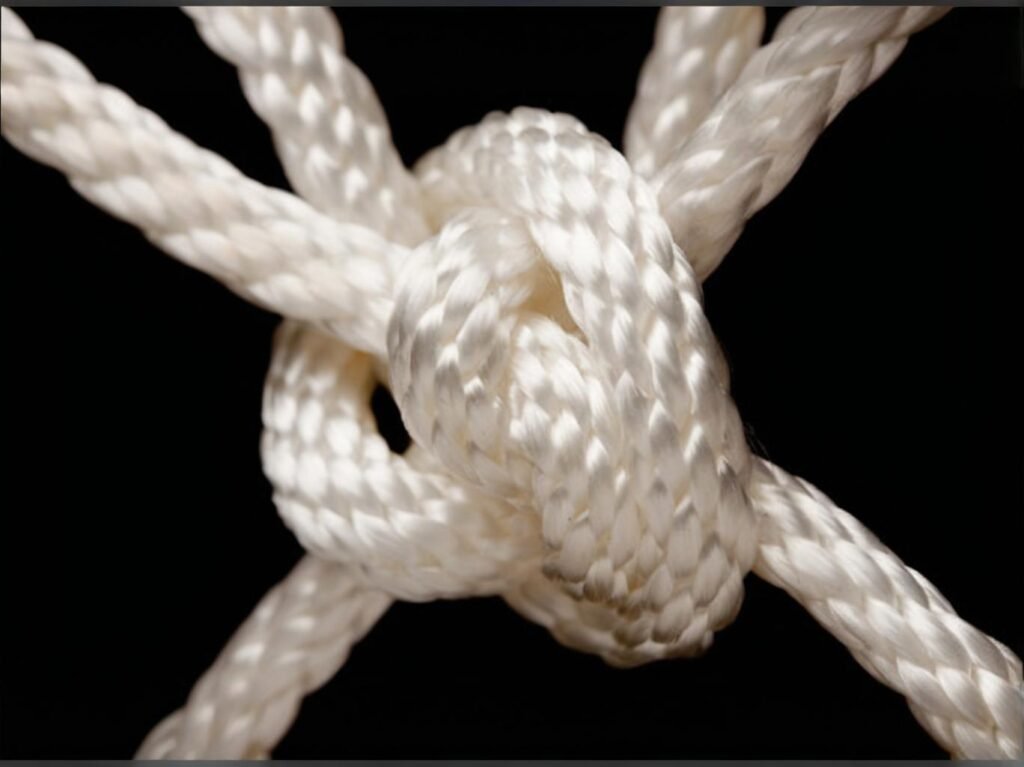
In today’s competitive global market, nylon fabric buyers—especially in industries like outdoor sports, technical gear, and fashion—can’t afford inconsistencies in weave density, colorfastness, or durability. That’s why leading nylon fabric manufacturers don’t just focus on price or capacity—they invest deeply in quality assurance (QA) systems that guarantee every meter of fabric performs as expected.
Top nylon fabric manufacturers maintain quality and consistency through ISO-certified quality management systems, real-time process monitoring, raw material testing, and post-production performance tests such as abrasion resistance, colorfastness, and tensile strength evaluations.
But beyond the textbook definition, true fabric quality assurance requires a multi-level strategy—from fiber to final inspection. Here’s how it works in practice.
How Manufacturers Maintain Quality at Every Step
1. Pre-Production: Raw Material Vetting & Batch Traceability
High-grade nylon products start with high-quality polymer granules or chips. Top-tier mills never cut corners at this stage.
- Supplier Audits: Many factories conduct yearly audits of their upstream suppliers to ensure consistent nylon 6 or nylon 6,6 purity.
- Batch Traceability: From resin pellet to dyed fabric roll, batch codes are assigned for traceability. This allows manufacturers to pinpoint problems in case of performance failure.
💡 Expert Tip: Look for suppliers who offer full Material Traceability Reports, showing polymer origin, melting index, moisture level, and lot number.
2. In-Process Monitoring: Digital QA on the Factory Floor
Modern nylon weaving mills are equipped with Industry 4.0 technologies that ensure real-time QA monitoring.
- Automated Loom Monitoring: Sensors track yarn tension, shuttle speed, and weave uniformity to detect snags or missed stitches.
- Fabric Density Checks: Smart cameras scan for deviations in thread count, especially important in ripstop or military-grade nylons.
- Coating Uniformity: When applying PU, TPU, or silicone coatings, machines use precision spray or lamination control systems to avoid uneven application.
📊 Data Point: According to a 2025 survey by TechTextile, 87% of top-tier mills now use AI-based defect detection systems to reduce post-weaving faults.
3. Post-Production Testing: Lab-Grade Assurance for Every Roll
After weaving, dyeing, and finishing, each fabric batch goes through mechanical, physical, and chemical testing to verify performance.
Common Tests Include:
| Test | Standard | Why It Matters |
|---|---|---|
| Tensile Strength | ASTM D5034, ISO 13934-1 | Measures how much force a fabric can withstand before tearing |
| Tear Resistance | ASTM D2261 | Critical for gear, backpacks, tents |
| Abrasion Resistance | Martindale ISO 12947 or Wyzenbeek ASTM D4157 | Ensures longevity in friction-heavy uses like seats or outerwear |
| Colorfastness to Washing | ISO 105-C06 | Assures the color won’t fade in the laundry |
| Colorfastness to Light | ISO 105-B02 | Important for outdoor applications |
| Water Repellency | AATCC 22 or ISO 4920 | Ensures proper DWR (durable water repellent) coatings are applied |
| Shrinkage | AATCC 135 | Ensures dimensional stability after laundering |
4. Compliance with Global Certifications
Top nylon fabric suppliers are increasingly required to meet multiple international standards to remain competitive, especially when supplying to fashion brands or government/military contracts.
| Certification | Focus Area | Benefit to Buyers |
|---|---|---|
| OEKO-TEX Standard 100 | Chemical safety | Guarantees fabric is free from harmful substances |
| ISO 9001 | Quality Management | Assures consistent processes & continual improvement |
| GRS (Global Recycled Standard) | Recycled content | Required by brands using recycled nylon yarns |
| bluesign® | Sustainable chemicals & inputs | Required by many EU and US outdoor brands |
| REACH Compliance | EU chemical regulation | Mandatory for European market entry |
📍 Real-World Example: A Swiss medical uniform brand chose a Taiwanese nylon fabric supplier with both ISO 9001 and OEKO-TEX certifications. The switch led to a 28% improvement in end-user satisfaction, largely due to superior breathability and consistent fabric weight across repeat orders.
5. In-House vs. Third-Party Testing
Many high-end mills now offer both in-house testing (for quick QC) and third-party lab verification for large or critical contracts.
- In-house testing enables fast response to defects or production shifts.
- Third-party testing (e.g., SGS, Intertek, TÜV SÜD) is typically used to meet legal and export compliance.
🏭 Factory Snapshot: Some advanced factories even maintain internal climate-controlled labs with programmable wash/dry/UV test chambers to simulate long-term use of the fabric.
6. Quality Reporting and Customer Feedback Loops
Top suppliers issue detailed QA reports with every shipment, including:
- Fabric batch number
- Test results (tensile, abrasion, shrinkage, etc.)
- Coating weight or thickness
- Colorfastness grades
- Certification codes
They also track customer complaints and defect returns to revise processes—sometimes using CRM-linked dashboards that trace fabric performance in the field.
End-to-End Quality Workflow
| Stage | Key Focus | Tools or Standards Used |
|---|---|---|
| Raw Material | Purity, polymer consistency | Inbound lab tests, supplier audits |
| Weaving | Density, yarn alignment | Automated looms, sensors |
| Coating/Dyeing | Uniform finish, adherence | Spray control systems, lab dips |
| Post-Production Testing | Durability, performance | ISO/ASTM standard methods |
| Certifications | Market access, safety | OEKO-TEX, REACH, ISO, bluesign |
| Shipment QA | Batch control, final checks | QA reports, third-party audits |
What Are the Latest Innovations in Nylon Fabric Production?
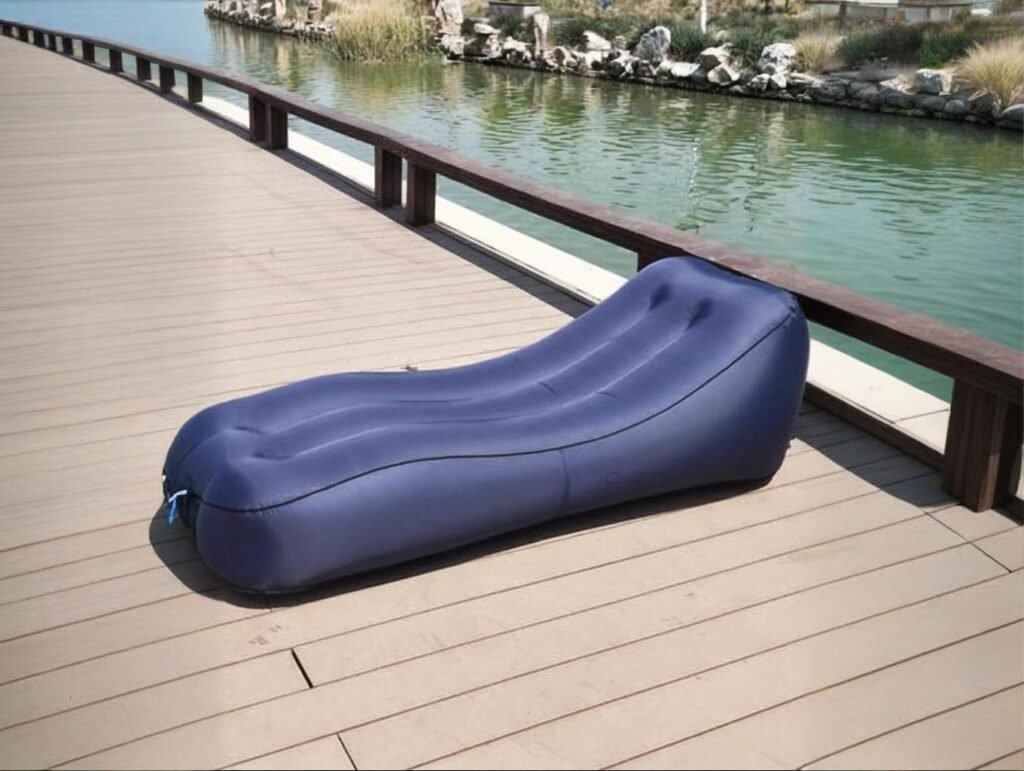
Nylon fabric—first introduced in the 1930s as a silk substitute—has come a long way from its origins. Today, it’s not just about being durable or affordable. The modern nylon textile industry is witnessing a technological renaissance, driven by the dual need for high performance and sustainability. Brands in 2025 aren’t just asking “How strong is it?”—they’re asking, “How smart, how green, and how versatile can it be?”
Latest innovations in nylon fabric production include high-tenacity yarns, recycled nylon from ocean waste, waterless dyeing techniques, functional coatings like UV and flame resistance, and smart textiles with sensor integration—pushing nylon into both sustainable and tech-forward domains.
These breakthroughs are revolutionizing how nylon fabrics are made, used, and perceived—making them suitable for everything from eco-conscious fashion to military-grade performance gear.
Breakthrough Technologies and Their Industry Impact
1. High-Tenacity Nylon Fibers: Engineered for Performance
High-tenacity (HT) nylon uses refined polymer structures and optimized spinning techniques to significantly boost durability and load-bearing capacity.
- Strength Increase: Compared to regular nylon 6 yarn, HT nylon can offer 30%–40% higher tensile strength, making it ideal for rugged applications.
- Applications:
- Military rucksacks
- Climbing harnesses
- Heavy-duty industrial curtains
- Tactical slings
💡 Did you know? Many parachute fabrics and high-performance tents now use 210D or 420D high-tenacity nylon for extreme resistance to tearing and stretching.
2. Recycled Nylon (rNylon): Sustainability Without Compromise
Recycled nylon has become a headline innovation, especially with the rise of circular economy manufacturing.
- Sources:
- Discarded fishing nets
- Nylon waste from fabric mills
- Post-consumer materials (e.g., carpet fiber, hosiery)
- Key Players:
- ECONYL® by Aquafil is a pioneer, offering regenerated nylon with identical performance to virgin nylon.
- Environmental Benefits:
- Reduces reliance on fossil fuels
- Cuts CO₂ emissions by up to 90% compared to virgin nylon
- Promotes waste recovery
| Comparison | Virgin Nylon | Recycled Nylon |
|---|---|---|
| Source | Petroleum-based polymers | Waste materials like fishing nets |
| Carbon Footprint | High | Up to 90% lower |
| Performance | High | Same as virgin (if processed well) |
| Cost | Moderate | Slightly higher due to processing |
| Sustainability | Low | High |
📍 Case Insight: An Australian surfwear brand partnered with a Chinese mill offering rNylon from ocean plastics. This initiative boosted their brand reputation and earned them a sustainability award in 2024.
3. Waterless Dyeing & Eco Finishing: Less Water, More Impact
Traditional dyeing processes can use up to 200 liters of water per kilogram of fabric—a major concern for water-scarce regions.
Key Eco Dyeing Innovations:
- Supercritical CO₂ Dyeing: Uses carbon dioxide instead of water, making it fully closed-loop and reusable.
- Plasma Finishing: Alters the fabric’s surface properties (e.g., hydrophobicity) with no chemical runoff.
- Dope Dyeing (Solution Dyeing): Pigments are added directly to the polymer solution before fiber formation, reducing dye water use by 90% and energy by 60%.
💡 Real-World Savings: A Taiwanese factory using supercritical CO₂ dyeing reported saving 6 million liters of water annually.
4. Advanced Coatings and Laminates: Multifunctional Protection
Functional finishes are no longer an afterthought—they’re a core selling point.
| Coating Type | Functionality | Common Usage |
|---|---|---|
| PU (Polyurethane) | Waterproofing, breathability | Jackets, bags |
| TPU (Thermoplastic Polyurethane) | Stretch + water resistance | Sportswear, gloves |
| Silicone | Heat + UV resistance | Tents, sails |
| Ceramic or Carbon | Abrasion + thermal protection | Firefighting gear, industrial aprons |
| Antimicrobial Silver Ion | Kills odor-causing bacteria | Medical uniforms, underwear |
📍 Brand Example: A U.S.-based outerwear brand used silicone-coated 70D ripstop nylon for its new hiking tent. It passed 5,000 mm hydrostatic head testing, outperforming traditional coatings with a 20% weight reduction.
5. Smart Textile Integration: Nylon Gets Intelligent
Smart textiles (e-textiles) are revolutionizing nylon’s role in wearable technology and responsive fabrics.
- Conductive Nylon Yarns: Blended with metallic fibers or carbon nanotubes for data transmission.
- Embedded Sensors: For real-time tracking of temperature, moisture, heart rate, or movement.
- Shape-Memory Coatings: Fabrics that react to heat or light by changing texture or permeability.
| Feature | Function | Example Use |
|---|---|---|
| Moisture Sensing | Tracks sweat levels | Athletic shirts |
| Temperature Regulation | Expands or contracts with body temp | Smart jackets |
| Motion Detection | Embedded accelerometers | Rehab wear or military |
💡 Start-Up Highlight: A Korean manufacturer launched a nylon-based yoga outfit with posture correction sensors and vibration alerts—selling out in less than two months via Kickstarter.
Innovations in Nylon Production (2025 Snapshot)
| Innovation | Primary Benefit | Target Market |
|---|---|---|
| High-tenacity yarns | Increased strength & abrasion resistance | Military, outdoor, heavy-duty |
| Recycled nylon (ECONYL® etc.) | Lower environmental impact | Sustainable fashion, accessories |
| Waterless & dope dyeing | Eco-conscious manufacturing | Apparel, home textiles |
| Advanced coatings | Weather/UV/fire resistance | Workwear, tents, outerwear |
| Smart integration | Wearable tech capabilities | Sportswear, healthcare, defense |
How Do Minimum Order Quantities (MOQs) Vary Among Nylon Fabric Suppliers?
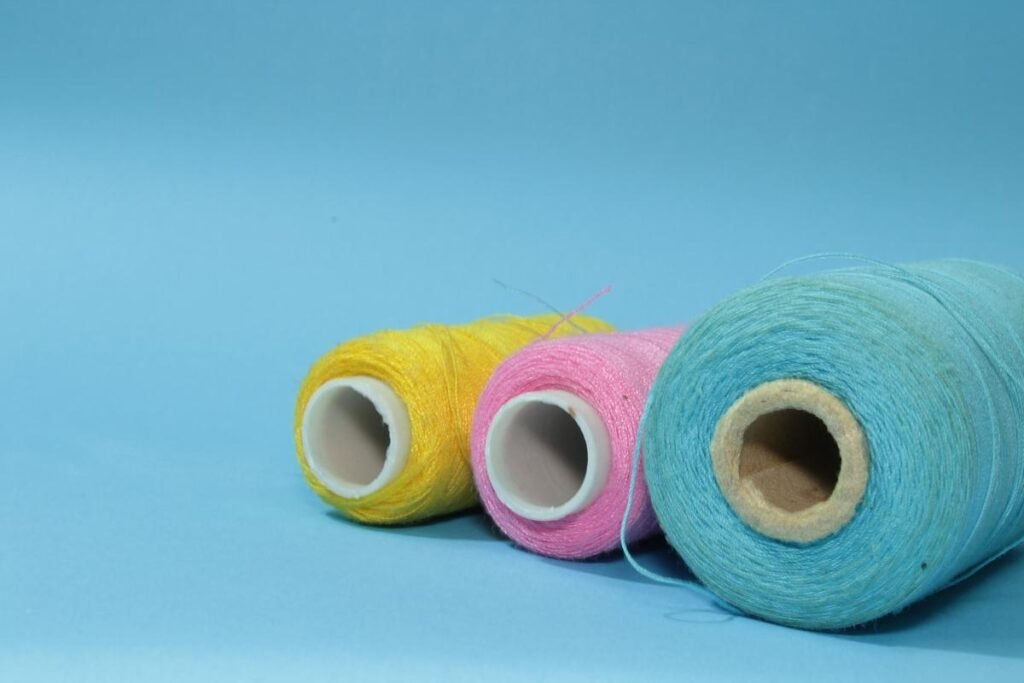
Minimum Order Quantity (MOQ) is one of the most critical variables that can make or break your fabric sourcing decision—especially for businesses balancing between scalability and flexibility. In 2025, global demand for custom nylon applications is rising across sectors like apparel, outdoor gear, medical textiles, and industrial use. Suppliers, in turn, are evolving their MOQ policies to match.
MOQs for nylon fabric range from 100 to 5,000 meters in 2025, depending on factors like fabric type, customization level, supplier scale, and regional production capabilities. Lower MOQs are often offered by suppliers catering to startups or niche orders.
Today’s sourcing landscape is no longer one-size-fits-all. Let’s break down how MOQ structures vary and what that means for buyers at different growth stages.
Understanding MOQ Flexibility in a Changing Market
1. Large-Scale vs. Boutique Nylon Fabric Suppliers
| Supplier Type | MOQ Range | Typical Buyer Profile | Pros | Cons |
|---|---|---|---|---|
| Mass-Production Mills | 1,000–5,000+ meters | Established brands, wholesalers | Low unit cost, stable availability | High capital commitment, less flexibility |
| Small/Mid-Scale Suppliers | 300–1,000 meters | Regional brands, importers | Balanced MOQ, some customization | Less R\&D capability |
| Agile or Custom-Focused Suppliers | 100–300 meters | Startups, niche brands | Rapid sampling, creative freedom | Higher unit price, capacity limitations |
🔍 Insight: A Japanese textile mill specializing in eco-coatings reduced its MOQ for coated nylon to 250 meters for GOTS-certified buyers, enabling smaller eco brands to access sustainable materials previously reserved for bulk-only orders.
2. How Fabric Type and Finishing Influence MOQ
| Fabric Type | MOQ Range | Why? |
|---|---|---|
| Uncoated Plain Nylon | 500–1,500 meters | Easy to weave, stocked in bulk |
| Ripstop Nylon | 500–2,000 meters | Technical fabric, but common enough to support moderate MOQ |
| TPU or Silicone-Coated Nylon | 1,000–5,000 meters | Requires special finishing, longer machine setup |
| Printed Nylon (Digital Print) | 100–500 meters | Low setup cost, digitally controlled process |
| Recycled Nylon (e.g., ECONYL®) | 300–1,000 meters | Limited feedstock, green certifications may reduce MOQ for certified brands |
💡 Tip for Designers: Custom prints (e.g., for seasonal collections) are often feasible at lower MOQs using sublimation or pigment digital print. Some Chinese mills even allow print sampling on just 50 meters before committing to full runs.
3. Regional MOQ Trends: Where Flexibility Reigns
| Country | Average MOQ Range | Notes |
|---|---|---|
| China | 300–3,000 meters | Wide range of mills from large-scale to agile OEM factories. Print MOQs start at 100m. |
| India | 500–2,000 meters | More consistent MOQ due to semi-automated looms. Some eco-factories offer low MOQ for GOTS buyers. |
| Turkey | 500–1,500 meters | Balanced MOQ for European compliance buyers. |
| South Korea | 100–800 meters | High-tech specialty fabric makers offer low MOQ for innovation-based textiles. |
| Vietnam | 500–2,500 meters | Stable MOQ with growing export capacity. Limited low-MOQ print services. |
📍 Case Example: An Australian tactical gear brand sourced high-tenacity ripstop nylon with water-resistant PU coating from a Vietnamese mill that offered a MOQ of 1,200 meters. The supplier also provided free samples and a lead time of 25 days, enabling quick pre-season rollout.
4. MOQ vs. Lead Time: The Trade-Off Matrix
Low MOQ usually comes with trade-offs. Shorter runs may be squeezed between larger orders, affecting production schedules and unit pricing.
| MOQ Size | Typical Lead Time | Price Per Meter | Sampling Availability |
|---|---|---|---|
| 100–300 meters | 12–30 days | High | Yes, often free |
| 500–1,000 meters | 20–35 days | Medium | Usually yes |
| 2,000+ meters | 30–50+ days | Low | Yes, for paid samples |
💬 Factory Insight: A South Korean supplier producing smart moisture-wicking nylon offers MOQ of 150 meters for startups, but quotes lead times of 30 days due to lab testing and prototype batch scheduling.
5. Contract Terms, Negotiation Leverage & Relationship Building
Some suppliers are open to MOQ negotiations under these conditions:
- Repeat Orders: Buyers who plan recurring purchases may secure lower MOQ on initial orders.
- Off-Season Production: Factories with idle capacity between peak seasons are more likely to entertain small runs.
- Shared MOQ (Pooled Orders): Some agents and sourcing platforms allow batch orders from multiple buyers to meet factory MOQ.
🛠️ Practical Tip: If your brand only needs 150 meters but the factory requires 500, ask whether they can keep the remainder in stock for future runs. This helps meet MOQ while avoiding waste.
MOQ Factors at a Glance
| Factor | How It Impacts MOQ |
|---|---|
| Fabric Type | Coated and recycled nylons usually have higher MOQs |
| Customization | Custom color, print, or finish raises MOQ |
| Production Method | Digital and modular systems enable lower MOQ |
| Supplier Size | Larger mills often require higher MOQs |
| Market Segment | Niche or sustainable brands may get special terms |
| Order History | First-time buyers may face strict MOQ unless building long-term relationships |
Final Case Study: From MOQ Risk to Scaled Growth
An emerging U.S. bag brand initially sourced 300 meters of silicone-coated ripstop nylon from a Chinese supplier to test-market their product. The factory offered free pre-samples, accepted a low MOQ due to their fast prototyping system, and allowed color matching via Pantone. The test batch sold out in under 2 months, and the buyer returned with a repeat order of 2,000 meters, triggering a price discount and faster production slot.
What Certifications and Compliance Standards Should Buyers Expect from Nylon Fabric Manufacturers?

As global sourcing becomes more transparent and accountability-focused, certifications have become the new currency of trust in nylon fabric manufacturing. They serve as third-party validation of a supplier’s quality, safety, environmental impact, and ethical practices—all non-negotiables for brands in 2025 navigating competitive, regulation-heavy markets.
In 2025, key certifications buyers should expect from nylon fabric manufacturers include OEKO-TEX Standard 100, REACH compliance, bluesign®, ISO 9001, and ISO 14001. These standards validate product safety, chemical compliance, and environmental responsibility.
Brands—especially those in the fashion, outdoor, automotive, or upholstery sectors—are under pressure to prove that every link in their supply chain meets global compliance. Let’s dive deeper into what each certification means and why it matters.
Certification Landscape and Their Strategic Value
1. OEKO-TEX® STANDARD 100: Chemical Safety for Human Health
- What It Covers: Over 300 harmful substances including azo dyes, heavy metals, formaldehyde, and pesticides.
- Who Needs It: All consumer-facing brands—especially apparel, baby products, and furnishings.
- Validity: One year (must be renewed).
- Testing Level: From yarn to final fabric roll.
✅ Use Case: A baby sling brand in Germany mandated OEKO-TEX certified nylon to ensure the fabric was hypoallergenic, non-toxic, and safe for skin contact.
2. REACH Compliance: Legal Requirement for European Market Access
- What It Covers: Registration and restriction of thousands of chemicals used in dyeing, coating, and finishing.
- Who Needs It: Any fabric or product being exported to the EU.
- Risk of Non-Compliance: Customs delays, fines, or rejection from retailers.
| Component | Requirement | Impact |
|---|---|---|
| Nylon Polymer | Registration under REACH Annexes | Proves safety of base material |
| Dyes/Additives | Not listed under SVHC list | Confirms fabric is free from banned substances |
📌 Fact: As of 2025, over 224 substances are on the SVHC list (Substances of Very High Concern)—REACH-compliant suppliers constantly monitor updates to maintain legal eligibility.
3. bluesign®: The Benchmark for Sustainable Production
- What It Covers: Chemical input management, worker safety, emissions control, water and energy usage.
- Who Uses It: Premium brands with strong ESG (Environmental, Social, Governance) policies.
- What It Implies: Full traceability and minimal environmental footprint.
| bluesign® Component | Benefit |
|---|---|
| Input Stream Management | Avoids banned/toxic chemicals from the start |
| Energy & Water Monitoring | Reduces CO₂ footprint and water waste |
| Worker Safety & Training | Ensures ethical and compliant workplaces |
🔍 Case Example: A Canadian ski outerwear brand chose a Taiwan-based nylon supplier with bluesign® certification. The move helped them reduce water consumption by 70% and cut CO₂ emissions by 40% across the fabric lifecycle.
4. ISO 9001: Quality Control You Can Trust
- Scope: Internationally recognized quality management system (QMS).
- Relevance to Nylon: Covers consistency in yarn denier, color match, tensile strength, and defect-free fabric rolls.
- Auditing Frequency: Every 3 years with internal audits yearly.
| QMS Element | Nylon Fabric Impact |
|---|---|
| Documented SOPs | Consistent coating and dyeing quality |
| CAPA (Corrective Actions) | Faster resolution of production defects |
| Client Feedback Loop | Drives product improvement |
🧪 Real Data: A Chinese nylon mill with ISO 9001 certification reported a 23% drop in defect returns after implementing a new inspection protocol under ISO guidelines.
5. ISO 14001: Environmental Management That Matters
- Scope: Framework for reducing industrial environmental impact.
- Relevance: Regulates emissions from coating machines, dye tanks, and chemical disposal systems.
- Benefit: Preferred by brands with sustainability targets or ESG-linked investor scrutiny.
| ISO 14001 Metric | Application in Nylon Mills |
|---|---|
| Wastewater Control | Dyeing unit discharge treatment |
| Air Emission Monitoring | VOC control in heat-setting processes |
| Resource Optimization | Reducing electricity in warping and weaving |
🌱 Supplier Insight: A Korean nylon supplier secured long-term partnerships with Scandinavian outdoor brands by aligning with ISO 14001 and reporting annual improvements in energy usage.
6. Additional and Emerging Certifications to Watch
| Certification | Focus | Emerging Use |
|---|---|---|
| GRS (Global Recycled Standard) | Recycled material content, chain of custody | Crucial for brands using rNylon (recycled nylon) |
| Higg Index (FEM) | Environmental impact measurement across lifecycle | Used by Nike, Patagonia, and others |
| ZDHC Gateway (Zero Discharge of Hazardous Chemicals) | Chemical safety and wastewater transparency | Adopted by advanced mills using digital dyeing |
🧭 Forward-Looking Tip: If your brand is exploring ECONYL®, Q-NOVA®, or other recycled nylon options, GRS certification ensures legitimacy and audit-ready compliance for green marketing claims.
Certification Snapshot for Nylon Fabric Buyers
| Certification | Focus Area | Must-Have For |
|---|---|---|
| OEKO-TEX 100 | Chemical safety | Skin-contact products |
| REACH | Legal chemical compliance | EU-bound goods |
| bluesign® | Environmental + chemical transparency | Sustainability-focused brands |
| ISO 9001 | Quality management | All industrial buyers |
| ISO 14001 | Environmental management | ESG-driven sourcing |
| GRS | Recycled content | rNylon product lines |
| ZDHC | Chemical process control | Large-scale global brands |
Final Case Study: Certifications Driving Brand Growth
A U.K.-based accessories brand aimed to enter the Nordic market with a new line of urban backpacks made of recycled, water-repellent nylon. They partnered with a Vietnamese manufacturer that held:
- OEKO-TEX 100
- bluesign® certification
- GRS for 100% recycled yarn
- ISO 9001 + ISO 14001 dual systems
Result? The product line launched with full transparency documentation, passed retailer audits, and earned the brand a Sustainable Product of the Year Award—unlocking new retail channels in Sweden and Finland. Certifications are more than just badges—they are proof of performance, safety, ethics, and innovation. If you’re sourcing nylon fabrics in 2025, make sure your suppliers back up their claims with the right certificates. This not only de-risks your supply chain but also strengthens your product’s reputation in global markets.
How Do Nylon Fabric Manufacturers Adapt to Sustainability and Environmental Regulations?
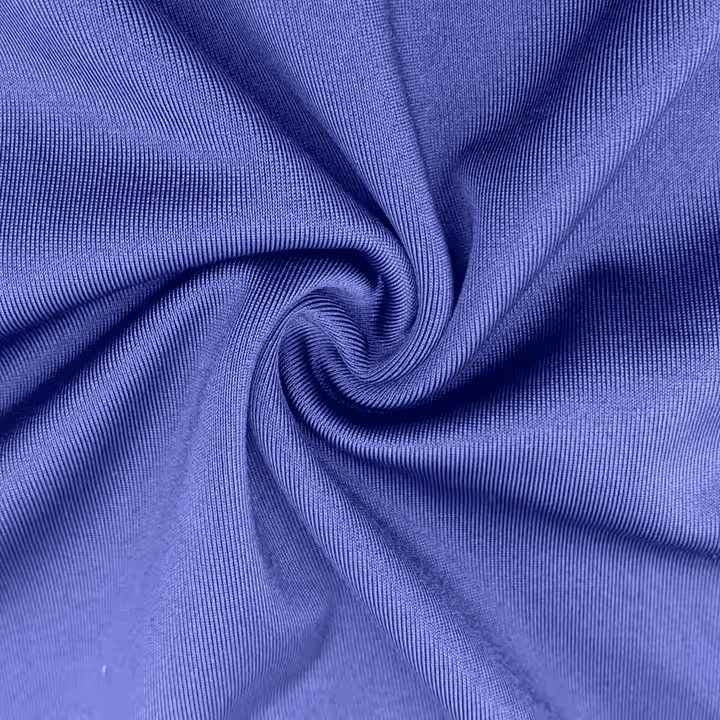
As governments tighten ecological laws and consumers demand planet-positive solutions, sustainability has moved from a value-add to a business necessity. In the nylon fabric sector—historically associated with petrochemical-based production and chemical-heavy dyeing—manufacturers must now demonstrate not just efficiency and quality, but also measurable environmental responsibility.
In 2025, nylon fabric manufacturers adapt to sustainability by using recycled or bio-based materials, optimizing water and energy use, implementing closed-loop systems, using low-impact chemicals, and achieving environmental certifications like bluesign® and OEKO-TEX. These efforts ensure regulatory compliance and meet growing eco-conscious consumer demand.
Sustainable Manufacturing Practices Redefining Nylon
1. Recycled Nylon (rNylon): A Core Ingredient for Green Sourcing
Recycled nylon is at the forefront of eco-transformation. Rather than relying on fossil fuel-derived virgin nylon (nylon 6 or nylon 6,6), top manufacturers now incorporate:
- Pre-consumer waste like spinning waste and factory cut-offs.
- Post-consumer waste such as discarded fishing nets, carpets, and plastic containers.
✅ Key Materials in Use:
- ECONYL® (Italy): Regenerated nylon made from ocean and landfill waste.
- Q-NOVA® (Italy): Recycled from industrial waste, certified by GRS and EU Ecolabel.
- REPREVE® Nylon (U.S.): From post-industrial and consumer waste.
| Source | Process | Environmental Benefit |
|---|---|---|
| Fishing nets | Cleaned, depolymerized, respun | Removes marine plastic, reduces oil use |
| Textile waste | Collected and granulated | Reduces landfill burden |
| Nylon carpet | Mechanical + chemical recycling | Enables circular fiber economy |
🔍 Impact: Recycled nylon production can cut CO₂ emissions by up to 90% and water consumption by over 80% compared to virgin nylon.
2. Water and Energy Efficiency: Smarter, Cleaner Production
Water-intensive dyeing and energy-heavy heat-setting have long burdened nylon production. In response, manufacturers have invested in:
- Waterless dyeing systems: Such as supercritical CO₂ dyeing and dope dyeing—which embed color into the polymer, eliminating post-dyeing.
- Closed-loop water recycling plants: Recycles up to 95% of water, reducing chemical-laden wastewater discharge.
- Solar-powered operations: Particularly in China, India, and Vietnam, where sunlight is abundant and industrial zones promote renewable incentives.
- Low-temperature heat setting & yarn processing: Saves energy without sacrificing fiber properties.
📈 Real Data: A bluesign®-certified mill in Taiwan reported saving 18 million liters of water per year after upgrading to waterless dyeing and reduced their carbon emissions by 22% per metric ton of fabric produced.
3. Safer Chemical Management: From Dirty Dyes to Clean Chemistry
The use of hazardous chemicals in conventional nylon processing—such as formaldehyde, phthalates, and heavy-metal dyes—has faced increased regulatory scrutiny.
Key chemical sustainability measures:
- Adoption of ZDHC (Zero Discharge of Hazardous Chemicals) protocols.
- Transition to non-toxic, biodegradable dyes.
- Using enzyme-based softeners and finishes instead of silicone and fluorocarbons.
- No-AZO dyes and heavy-metal free inks in digital printing for nylon garments.
| Initiative | Result |
|---|---|
| ZDHC-compliant dyeing | Safer wastewater, easier regulatory compliance |
| Biodegradable finishes | Improves end-of-life decomposition |
| Dope dyeing | No wastewater from dyeing stage |
🧪 Testing Compliance: Most sustainable manufacturers test their output against REACH, OEKO-TEX, and California Prop 65 standards to ensure chemical safety.
4. Environmental Certifications: Gateways to Global Markets
Certifications not only validate sustainable practices but also provide buyers with traceability and assurance, especially when entering eco-sensitive markets like the EU or North America.
| Certification | Focus Area | Benefits |
|---|---|---|
| bluesign® | Chemical and resource efficiency | Preferred by Patagonia, The North Face |
| OEKO-TEX Standard 100 | Chemical safety for humans | Ensures product is skin-safe |
| ISO 14001 | Environmental management system | Verifies long-term sustainability planning |
| GRS (Global Recycled Standard) | Traceability of recycled content | Required for rNylon branding |
| Higg Index | Impact measurement tool | Used by Nike, H\&M for mill evaluation |
🎯 Tip: Many buyers now require multi-certification compliance—for example, both bluesign® and GRS—to ensure holistic sustainability (chemical + material + management systems).
5. Carbon Footprint Reduction and Circular Models
Manufacturers are also tackling Scope 1 and Scope 2 emissions (on-site and purchased energy) by:
- Switching to biomass or electric boilers instead of fossil-fuel burners.
- Investing in carbon capture systems.
- Launching take-back programs with buyers to recycle fabric waste or unsold garments.
♻️ Circularity in Action: A Japanese nylon mill partnered with a global apparel brand to recycle end-of-life uniforms into new rNylon products, creating a closed-loop supply chain and cutting waste by 60%.
Top Sustainability Actions in Nylon Fabric Manufacturing
| Area | Practice | Environmental Benefit |
|---|---|---|
| Material | Use of recycled nylon | Reduces CO₂, diverts waste |
| Energy | Solar, low-temp processes | Cuts fossil fuel dependency |
| Water | Closed-loop systems | Saves up to 90% water |
| Chemicals | Non-toxic, ZDHC-compliant | Safer for people & planet |
| Certifications | bluesign®, OEKO-TEX, GRS | Trust-building, legal compliance |
| Circularity | Take-back and regeneration | Enables zero-waste production |
Which Nylon Fabric Manufacturers Offer Customization and Private Label Services?
In 2025, nylon fabric is more than just a raw material—it’s a strategic branding tool. With global competition intensifying across outdoor gear, fashion, industrial textiles, and tactical gear, buyers are increasingly seeking nylon fabric manufacturers who offer tailored customization and private label capabilities.
These services empower brands to stand out with unique textures, finishes, prints, and branding elements, while also reducing development time and MOQs for faster market entry.
Top nylon fabric manufacturers offer customization services like digital printing, custom coatings, and fabric blends, as well as private label solutions including branded tags, woven labels, and packaging. They support design development, prototyping, and flexible MOQ production for both startups and established brands.
Full-Spectrum Customization Capabilities
1. Custom Color Matching and Dyeing
Whether a brand requires Pantone color matching or wants to align with a seasonal color palette, top-tier manufacturers provide:
- In-house dye labs with spectrophotometers for precise color replication
- Support for dope-dyeing, vat dyeing, acid dyeing, or pigment printing
- Small-batch dyeing for prototypes or capsule collections
🎯 Ideal for: Fashion brands, luggage manufacturers, and sportswear producers needing consistent brand colors across product lines.
2. Digital and Screen Printing Services
Nylon fabric is notoriously tricky to print on due to its synthetic nature. Leading manufacturers use advanced printing methods to ensure sharp results:
| Method | Advantages | Use Cases |
|---|---|---|
| Digital Printing | High resolution, low MOQ, fast sampling | Fashion, tactical, pet gear |
| Rotary Screen Printing | Economical for large runs, bright colors | Industrial bags, uniforms |
| Sublimation Printing (on coated nylon) | Bold graphics, stretch-resistant | Sportswear, lifestyle bags |
✨ Added Value: Some suppliers also offer custom camouflage prints, reflective prints, glow-in-the-dark inks, or logo layering with TPU film applications.
3. Specialized Coatings and Finishes
Customization goes beyond color and print—it extends into functional performance. Manufacturers now offer a menu of finish options:
| Finish/Coating | Benefits | Target Applications |
|---|---|---|
| PU/TPU Coating | Water resistance, structure | Backpacks, tents, pouches |
| Flame Retardant (FR) | Safety compliance | Tactical gear, industrial apparel |
| Antimicrobial Finish | Hygiene and odor control | Medical gear, baby products |
| UV-resistant Coating | Sun protection, color retention | Outdoor cushions, awnings |
🔬 Some mills now use eco-friendly fluorocarbon-free (C0) coatings to meet global environmental standards.
4. Fabric Blending, GSM Control, and Custom Textures
Nylon can be engineered with other yarns such as polyester, spandex, or cotton to achieve:
- Stretchability (e.g., nylon-spandex)
- Breathability and softness (e.g., nylon-cotton)
- Cost reduction (e.g., nylon-poly blends)
Manufacturers also allow:
- GSM customization (from 50gsm ultralight to 1000gsm ballistic nylon)
- Weave/texture choices: Oxford, ripstop, twill, dobby, or satin
- Backing variations: Brushed, PVC, foam-laminated, or fleece-lined
📐 Pro Tip: Workwear and outdoor brands often demand custom ballistic nylon with double-layer coatings and heavy denier for durability.
5. Private Label Services (OEM/ODM)
For brands wanting to go beyond fabric and launch finished goods or components, many nylon mills offer:
- Branded woven labels, tags, heat transfer labels
- Logo embroidery, embossing, or screen printing
- Custom retail packaging (hang tags, polybags, boxes)
- Finished product manufacturing (bags, harnesses, covers, uniforms)
🧵 OEM vs ODM:
- OEM (Original Equipment Manufacturer): Manufacturer produces according to your design
- ODM (Original Design Manufacturer): Supplier provides existing designs that can be branded
Customization Capabilities at a Glance
| Customization Feature | Benefit | Best Use Cases |
|---|---|---|
| Color Matching | Brand consistency | Apparel, luggage, accessories |
| Digital Printing | Flexible design & quick launch | Limited editions, pet gear, fashion |
| Special Coatings | Enhanced performance | Tactical, medical, outdoor |
| Fiber Blending | Performance + price control | Sportswear, backpacks |
| GSM Customization | Tailored durability or softness | Uniforms, tents, kids’ products |
| Private Label Branding | Market differentiation | Retail brands, e-commerce lines |
Real-World Case Study
A mid-sized Scandinavian outdoor brand was looking to launch a weatherproof backpack line with reflective printing and antimicrobial lining. They collaborated with a Chinese nylon fabric manufacturer offering:
- PU-coated 600D nylon
- Reflective custom logos
- Antimicrobial silver-ion finish
- Private label packaging
- Low 300m MOQ per color
💡 Result: The launch led to a 35% higher conversion rate compared to their generic SKUs and gained shelf space in three new retail chains across Germany and the UK.
How to Choose the Right Nylon Fabric Manufacturer for Custom Projects
Before placing an order, brands should evaluate:
✅ Sampling Turnaround: Can the supplier produce prototypes in under 10–15 days?
✅ MOQ Flexibility: Do they support low minimums for testing SKUs?
✅ In-House vs Outsourced: Is customization handled internally for better quality control?
✅ Print and Coating Longevity: Are prints tested for abrasion, UV, or wash durability?
✅ Client Portfolio: Have they worked with well-known private label brands?
Final Takeaway
In today’s crowded market, your nylon fabric isn’t just material—it’s messaging. Whether you’re launching fashion-forward designs, eco-conscious gear, or rugged utility products, the right manufacturer with strong customization and private label capacity can turn your fabric order into a full product success story.
Let me know if you’d like a shortlist of verified OEM nylon suppliers offering custom development and private branding services for your target market (e.g., outdoor, fashion, tactical).
Ready to Source Customized, Sustainable Nylon Fabrics?
At SzoneierFabrics, we combine advanced manufacturing technologies, sustainable materials, and flexible customization to deliver premium nylon fabric solutions tailored to your brand. With low MOQs, fast sampling, and comprehensive support, we are your ideal partner for 2025 and beyond.
📩 Contact SzoneierFabrics today to discuss your custom nylon fabric needs and receive a personalized consultation.
